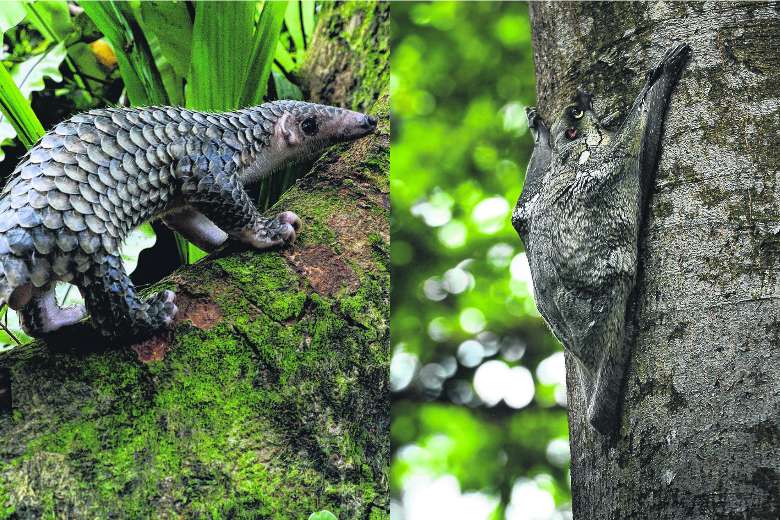To save rare animals in a forested area in Lentor, the Urban Redevelopment Authority (URA) has for the first time embarked on a novel wildlife management plan.
The 30ha plot designated for private housing is being gradually cleared so that animals are herded to nearby green areas, such as the Central Catchment Nature Reserve.
“The goal of the plan is to guide wildlife towards the neighbouring forested areas for relocation, and ensure that none remains before the land is cleared,” said Mr Alvin Tang, senior civil engineer from the URA’s development coordination department.
He told The Straits Times that the plan has been progressing well. Several animals, including the critically endangered Sunda pangolin and the flying lemur, have already been relocated or shepherded to nearby green plots.

The URA is carrying out the wildlife management plan following the results of a 2014 wildlife survey.
It also agreed to keep two green plots after feedback from the Nature Society (Singapore), or NSS, and residents of Teacher’s Estate, who had been shocked when they found out about the land clearance through URA fliers last December.
The first phase of the works, which include the wildlife management plan and vegetation clearance for 10ha, was completed in October and took about 1.5 months.
The second phase is ongoing and expected to be completed by the first quarter of next year.
Wildlife expert Subaraj Rajathurai from Strix Wildlife Consultancy, who conducted the 2014 survey, and contractors from Wildlife Studies and Control are carrying out the project.
As a gauge, vegetation clearance on a similar 10ha site can usually be done in a week, as trees are cut from all directions, said Mr Tang. But in this case, as clearance is done sequentially and only from one direction, more time is needed.
The URA declined to reveal costs.
The animal-friendly plan was made as several species of wildlife have been spotted in the vegetated area bounded by Lentor Drive, Yio Chu Kang Road, Munshi Abdullah Avenue and Tagore Road.
NSS has said animals spotted there include the Sunda slow loris, a shy monkey known as Raffles’ banded langur, and the straw-headed bulbul, a globally threatened bird.
Shepherding animals to safety is less invasive compared with physically relocating an animal, for example, which could stress it out and cause injury. Clearing the land at one go would also mean that slower-moving animals, or animals that choose to hide instead of flee, could be inadvertently killed.
But the URA cautioned that it may not be practical for the Government to carry out a wildlife management plan for all future projects.
For instance, such a plan would not typically be required for sites that are sparsely vegetated and barren, or found with minimal wildlife presence, Mr Tang said.
Earlier this year, NSS wrote a 10-page position paper calling for the land to be developed in phases so that some parts of the forest, including two rare freshwater streams, could be retained.
The authorities agreed that two green areas there will be temporarily kept for at least five years, after talks between the URA, residents and NSS.
Mr Leong Kwok Peng, chair of NSS’ conservation committee, said the shepherding of wildlife was a last resort. “I hope that it will not be a default solution and excuse to clear forests in the future.
“The Lentor stream can potentially be an attractive natural landscape to the development if it is incorporated in the overall planning.”
